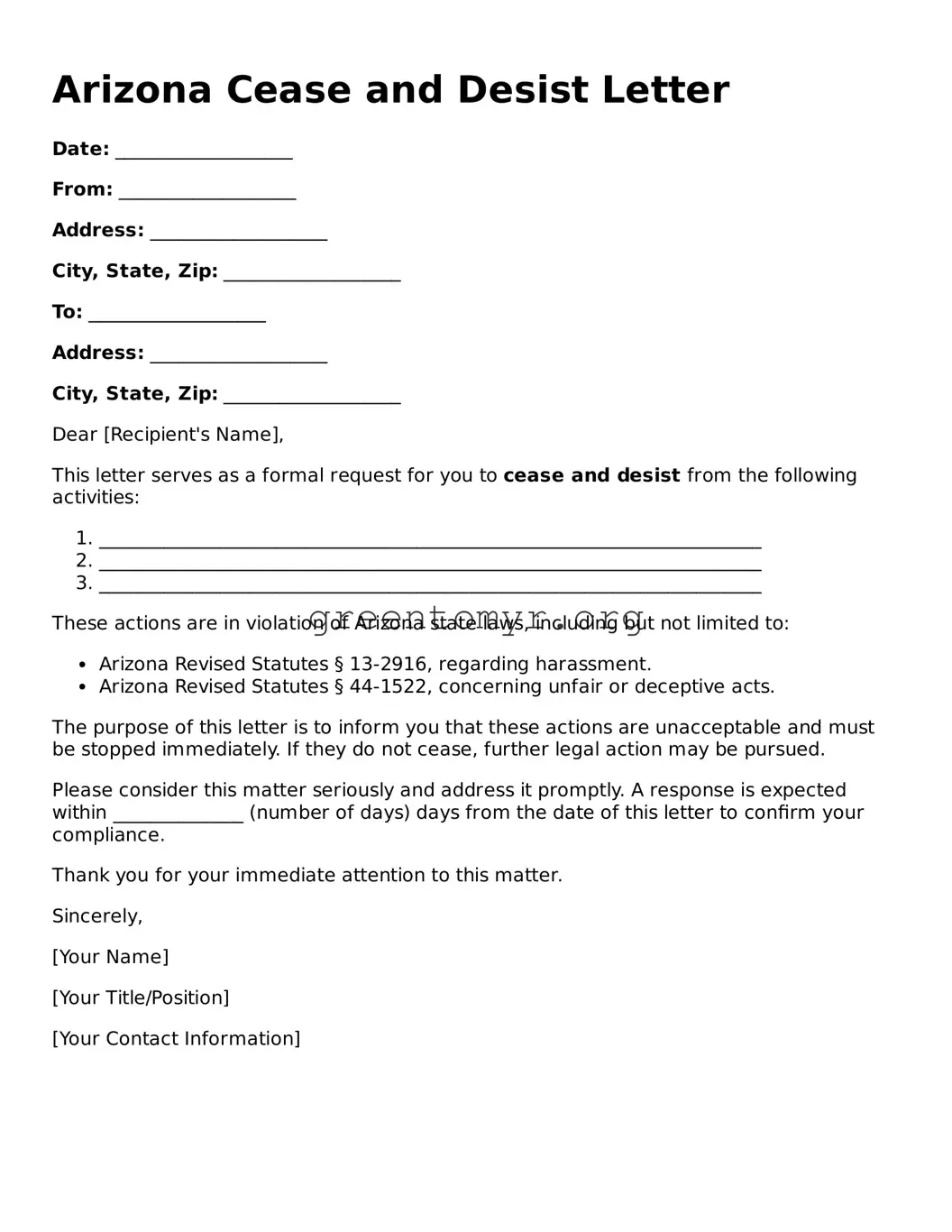Arizona Cease and Desist Letter
Date: ___________________
From: ___________________
Address: ___________________
City, State, Zip: ___________________
To: ___________________
Address: ___________________
City, State, Zip: ___________________
Dear [Recipient's Name],
This letter serves as a formal request for you to cease and desist from the following activities:
- _______________________________________________________________________
- _______________________________________________________________________
- _______________________________________________________________________
These actions are in violation of Arizona state laws, including but not limited to:
- Arizona Revised Statutes § 13-2916, regarding harassment.
- Arizona Revised Statutes § 44-1522, concerning unfair or deceptive acts.
The purpose of this letter is to inform you that these actions are unacceptable and must be stopped immediately. If they do not cease, further legal action may be pursued.
Please consider this matter seriously and address it promptly. A response is expected within ______________ (number of days) days from the date of this letter to confirm your compliance.
Thank you for your immediate attention to this matter.
Sincerely,
[Your Name]
[Your Title/Position]
[Your Contact Information]
